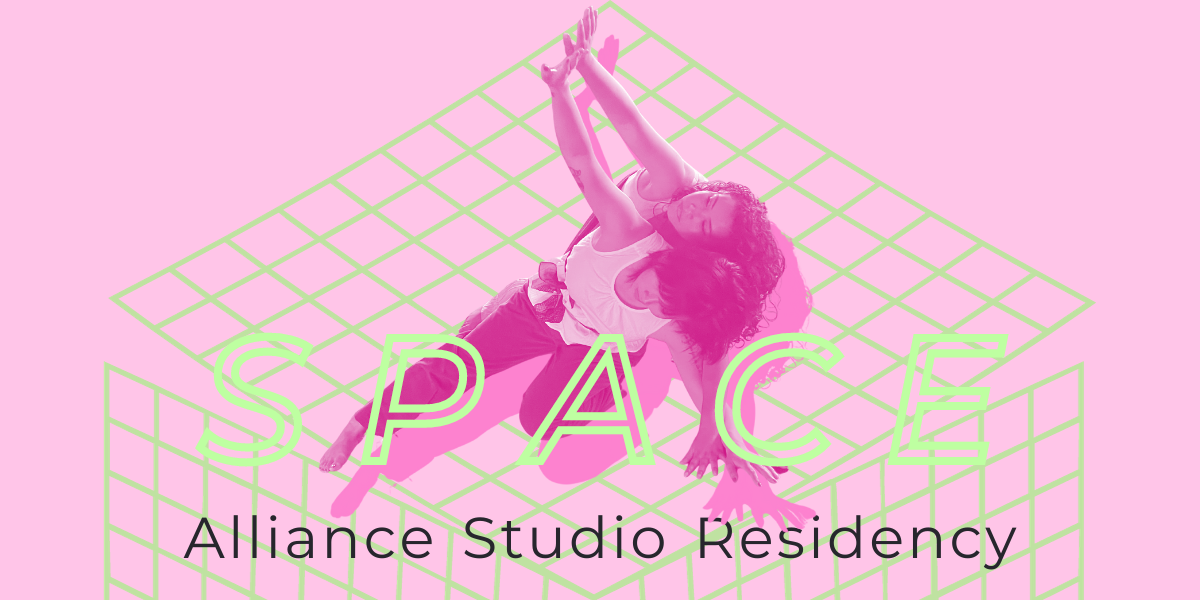
S P A C E 2023: Lesly Rodriguez & Nhu Nguyen
Last but certainly not least, we are sharing some insight from Lesly Rodriguez and Nhu Nguyen about their S PA C E Residency project, “calling it/in love.” They’ve been in residence at Malashock Dance for the last ten weeks, developing this work for our residency program based on personal but interconnected themes of inheritance. You can catch the performance sharing of this work tonight and tomorrow at 7pm at MCASD Downtown. Check it out:
Tell us about your history with dance, performance, and art practice. How has it influenced your voice as a choreographer?
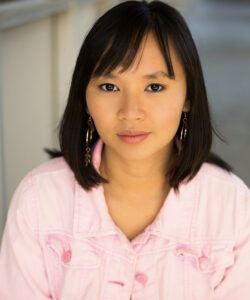 Nhu: I’ve been dancing since I was a small child. My mom first enrolled me in dance classes because she was tired of me climbing and swing on everything. She thought that dance was going to help me spend that extra energy, but then I never stopped. Most of my early training was in Ballet and traditional Vietnamese dances. I started performing with the Hochiminh City Ballet Symphony and Orchestra (HBSO) when I was 7, all the way till I left Vietnam. When I had to leave Vietnam, it was as abrupted as an immigration could be. I had less than 2 weeks to pack up my life, break up with my then-boyfriend, and move to the US because my mom wanted a “better” life for us. As expected from such transplantation, I spiraled into online videogames and depression because I lost my community and dance – pretty much my entire life was no longer mine. Fast forward about 3 years, I joined transcenDANCE because they were offering free dance classes down the street from where I lived. There I found friends and a purpose. I realized that I could do a lot more with my dancing. I started venturing out to teaching and using dance as a tool to explore social-justice issues. Once I join SDSU Dance division, I felt like all doors got opened and I was hungry to expand my perspective on dance. I quickly embraced experimentation and improvisation as a way to figure out life. Since college, I have practiced improvisation, contact improvisation, and dancemaking regularly, which in turn influence everything I create. I have always worked collaboratively and really enjoy collective dancemaking. In recent years, my works have explored themes such as shame/silence/stigma, memories and lineages, spellcasting, rituals, and adaptation.
Nhu: I’ve been dancing since I was a small child. My mom first enrolled me in dance classes because she was tired of me climbing and swing on everything. She thought that dance was going to help me spend that extra energy, but then I never stopped. Most of my early training was in Ballet and traditional Vietnamese dances. I started performing with the Hochiminh City Ballet Symphony and Orchestra (HBSO) when I was 7, all the way till I left Vietnam. When I had to leave Vietnam, it was as abrupted as an immigration could be. I had less than 2 weeks to pack up my life, break up with my then-boyfriend, and move to the US because my mom wanted a “better” life for us. As expected from such transplantation, I spiraled into online videogames and depression because I lost my community and dance – pretty much my entire life was no longer mine. Fast forward about 3 years, I joined transcenDANCE because they were offering free dance classes down the street from where I lived. There I found friends and a purpose. I realized that I could do a lot more with my dancing. I started venturing out to teaching and using dance as a tool to explore social-justice issues. Once I join SDSU Dance division, I felt like all doors got opened and I was hungry to expand my perspective on dance. I quickly embraced experimentation and improvisation as a way to figure out life. Since college, I have practiced improvisation, contact improvisation, and dancemaking regularly, which in turn influence everything I create. I have always worked collaboratively and really enjoy collective dancemaking. In recent years, my works have explored themes such as shame/silence/stigma, memories and lineages, spellcasting, rituals, and adaptation.
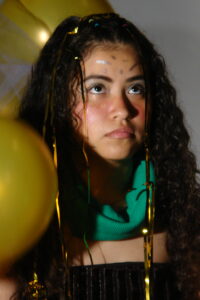
The Playground
Lesly: My earliest dance memory is learning how to dance cumbia with my mom and her friends at my grandmother’s apartment in Mexico City. I have memories of being involved in dance recitals at school in Mexico, memories of my 3rd birthday party where I performed a baile sorpresa(surprise dance). Although I could be a very shy kid, I always enjoyed performing because of how expressive it could be. My family immigrated to the U.S. when I was 6 years old, and dancing now only happened in the privacy of my bedroom. It was a challenge having to acclimate to a new everything and there were no longer many spaces where I felt safe to express myself. For a long time after that, dancer and artist were words I would never use to describe myself. I never received any formal training in the more traditional eurocentric dance forms such as ballet, contemporary, or modern until I was in high school. In highschool I decided to take a dance class because I was tired of taking P.E. and my counselor told me dance would give me my physical education credits. Taking this class sparked my excitement for dance again and I took every opportunity that year to get involved and perform. As much as I enjoyed it, I felt like I didn’t have the experience to continue and audition for the next level class. Instead I got involved in colorguard where there was no experience required. After highschool I had no expectation to continue to dancing, I thought that was the end. It was in college at CSUSM where I finally saw myself as a dancer and artist. I began taking classes at CSUSM where my expectation of who could be a dancer and what dance could look like expanded. Through CSUSM’s experimental dance project, I was introduced to artists of color such as ( jose abad, ishmael hueston jones, mayfield brooks, and many more – whose work quickly inspired me to use dance as a tool for self reflecting and healing. Dance has offered me new ways to get to know myself, explore my identity and heal.
How has your approach to dance creation changed or been different during your residency?
This work, in particular, requires us to listen intently to what does and does not want to show up. We recently concluded that this particular work does not like to be confined into arbitrary structure, so it has been a bit challenging in “assembling” the different layers into something one would consider cohesive or clear. The tools that I typically rely on have not been working. They have taken us further from our research, rather than clarifying. In these last few weeks, we had to pretty much let go of the desire to know what the dance is supposed to look/feel like, and instead trusting the depth of practice and our intuition to reveal what wants to be visible at that moment. It feels a bit more vulnerable for me (Nhu) personally. However, what have shown up for us during this process has been remarkable.
For example, I had a “breakdown” moment earlier in the process when diving into “inheritance.” All of a sudden, my relationship with my own mother and motherhood confronted me in my improvisation. I kept moving with it and kept asking myself to relax into the discomfort of not knowing. Then something changed. And that change has followed me into the rest of my life. My mom is currently visiting and staying in our home. Since her arrival, I have largely avoided our typical shouting matches and the deep resentment/frustration that I have around my mom. I am not saying that the research has fixed/healed our relationship, but what it feels like is that there is a bit more space for me to not compromise who I am while taking in her being/perspective. That kind of allowance and potential is what we’re interested in nurturing – and it’s oh so fleeting!
My (Lesly) approach to dance creation has been challenged through this residency. When making work I usually feel in control most of the time, but with this work I found myself feeling out of control for a majority of the time. Like Nhu mentioned, this work really demands that we listen deeply to it’s needs and ours as well. The work also asked for a type of vulnerability that is not always very accessible, so it made me question the way I prep my body and mind for its showing. What are the conditions to make the work come alive and for us to feel safe and taken care of to be able to show up for it? What charging ritual needs to happen off stage in order for our multiple selves to freely show up. While improvisation is my favorite practice and most work I create is improvisational, I have always relied on structure. A sequential structure that provides clarity for me when moving through an improvisational score, something that our current work doesn’t desire. Now that I am sitting down reflecting on our process, I can see that every week -while in the moment it may have felt like we were going back to the drawing board- was us meeting a different self of our work and had to spend time getting to know its other version.
Other than dance, what mediums are important to the overall theme of your piece? This could be music, projection, spoken word, etc. What role will these aspects play?
Music, or rather sound mixing, has played an important role in our process. We use sound to aid in the sense of multiplicity, as well as a conduit in bridging various aspects of our embodiment. In addition, we played with creating our own fabric and costumes, activating the space with rice and rituals, and creating an artifact that attempts to capture the journey we have had thus far.
What challenges have you faced during your residency?
We found that 10 weeks are both super generous and hardly enough time, so it has been challenging resisting the pressure of tidying up our research for the sake of presenting something “polished” and “easy to understand.” About half way through, we started to rely on some of the strategies that we have used to create the dance, but it quickly fell apart as we practiced the pre-conceived sequence. We also wanted to spend more time playing with other mediums but we barely scratched the surface, given the 10 weeks.
Something we found ourselves navigating during our residency is that our work often felt more honest with a witness present. This is something we had to take some time to unpack, why are we showing up differently when there is a witness? We discussed a variety of things, like recklessness and power dynamics. How do power dynamics come to play when there are only two people? Recklessness: Are we afraid to let parts of our multiplicity that are reckless show up, because we wanna ensure safety? It’s possible that it was one or both of these things combined, but recently while coming back to unpack this we went back to the beginning of our research. At the start of our research we would have a practice of witnessing each other and then reflecting back what came up for each of us. Witnessing from the beginning was an important part of our work, but along the way it was left out. We would use our score of witness and solo in our practice almost each week but it had shifted to something we would do as a warm up/preparation for our practice. It was amazing to see the impact of the removal of the witness on our work, now it makes sense why our work may feel off to us when a part that played such an important part in its growth was shifted to the sidelines.
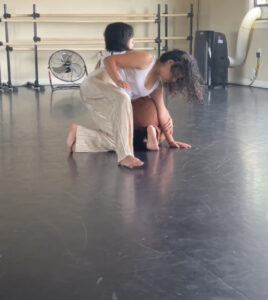
What would you like the audience to know about your work in this show?
This dance is an invitation for you to feel into your own multiplicity – the many selves that are you. Some guiding questions for us have been: How do you navigate the wake of someone else’s choices and call it love? How do we relate to each other/ empathize with each other without sacrificing ourselves? We hope that these questions lead to more questions, rather than answers. If you find yourself searching for meanings, relax and lean in. Whatever is visible to you is the meaning of this dance.
This dance is al
so a small fragment of its existence. This dance has felt frustrated, warm, confused, lost, joy, grief, love, everything and nothing all at once. This dance is the practice of embracing and acknowledging every part of our multiplicity. The practice of validating our personal experiences within a shared experience with another person despite how different our narratives might be.
How has this residency supported your artistic endeavors?
We performed the first version of this work almost a year ago and after we had a conversation about the desire to continue with the research but for a few months it stayed stagnant. This residency provided us the push we needed to continue with our research. It has also provided us with the opportunity to primarily focus on our artmaking and developing of our research without having to worry about the logistics that come with producing. The opportunity to present our work in progress at Community Sharing Day was also such a gift that gave us the opportunity to receive feedback and have others experience our research, alongside the conversations shared with the other resident artists. We are so grateful and appreciative of the Disco Riot team for providing us the time and space to just be artists. The residency helped nourish increasing interest in this research and we are excited to continue our practice after the residency as well.
There are still a few seats left to join us for this awesome sharing from Lesly, Nhu, and the other 2023 resident artists tonight and tomorrow!

